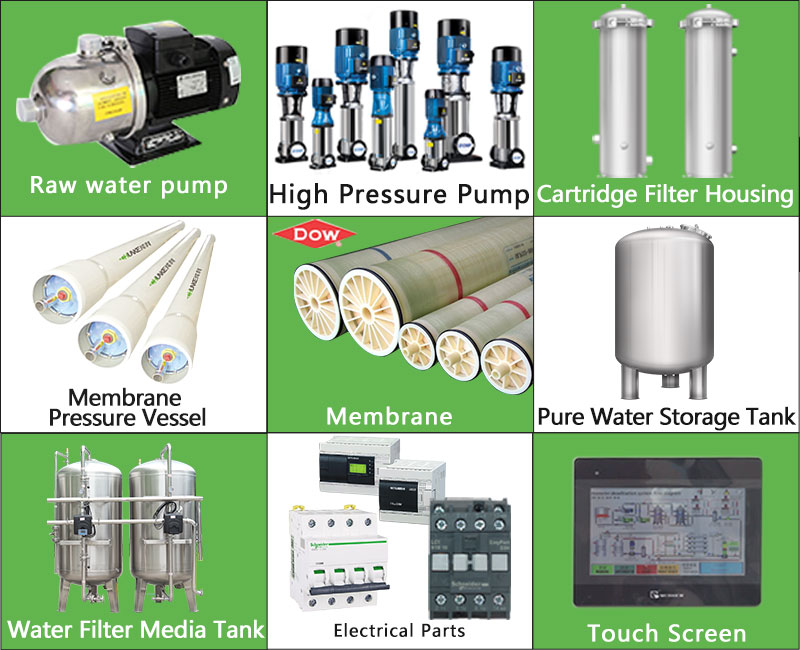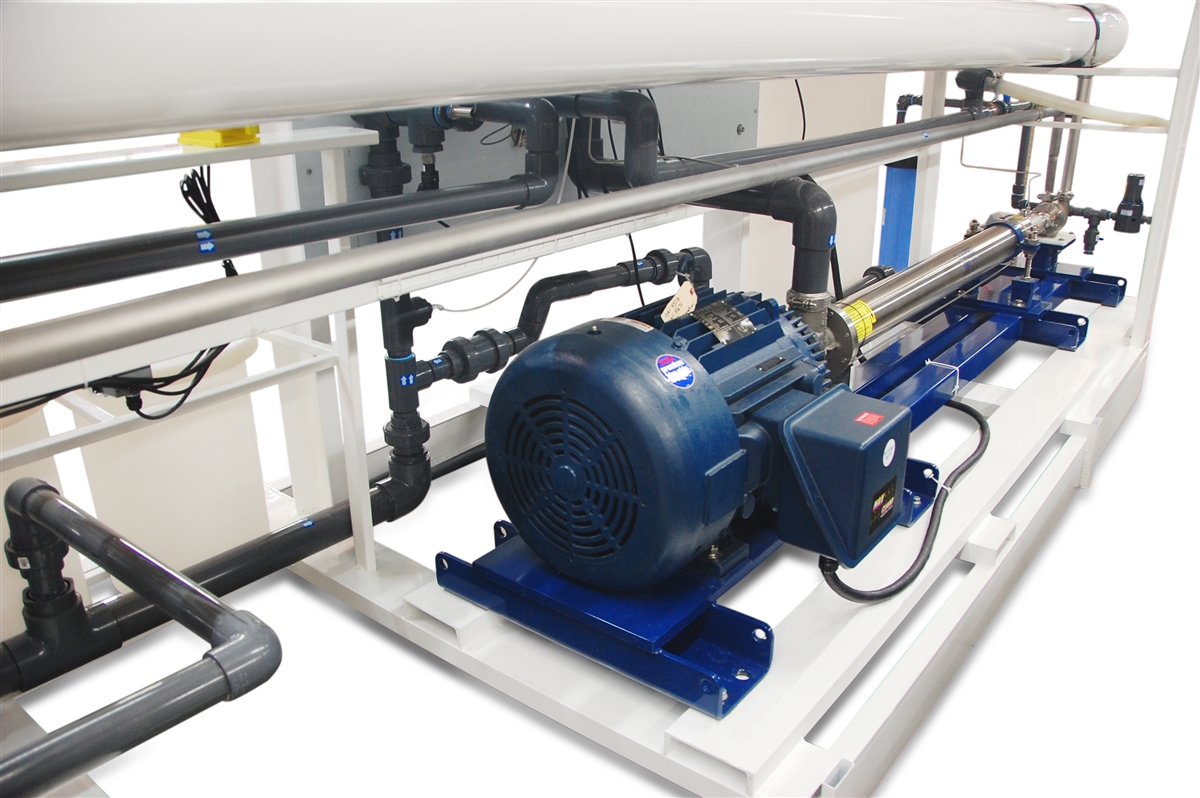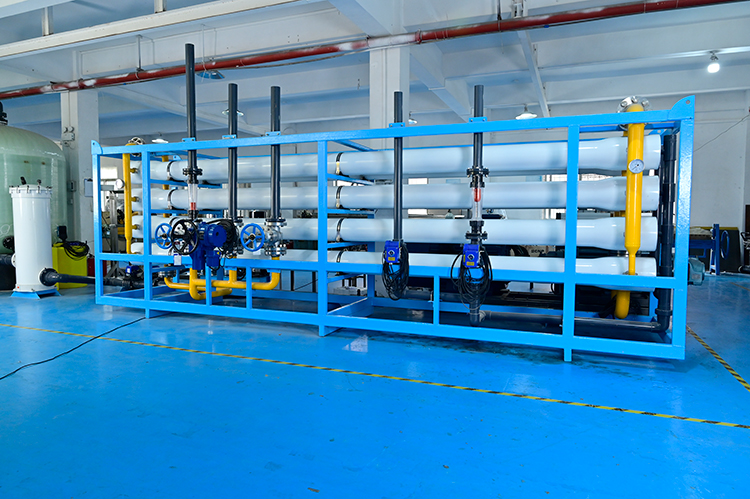How do you desalinate water on a boat?
As sea travel and marine life increase, desalination of seawater on board ships becomes increasingly important. So, what about how to desalinate seawater on a ship?
Seawater reverse osmosis desalination system:
A common method of desalinating seawater on board ships is a seawater reverse osmosis desalination system. In this system, seawater first passes through a series of pre-filters, which remove large impurities from the water, such as sediment and suspended solids. The pretreated water is then pumped at high pressure into one or more membrane shells. These membrane shells have high-pressure reverse osmosis membranes inside that allow only water molecules to pass through, leaving salt and other impurities on the other side of the membrane. Eventually, the fresh water produced goes into the ship's water tank, while the wastewater or salt water is discharged overboard.
Application of RO technology on ships:
RO technology is the key to desalinating seawater on board ships. Through the microporous structure of the reverse osmosis membrane, RO technology can efficiently remove salt and other dissolved solids from seawater, thereby producing clean, pure fresh water. This technology is widely used on ships and offshore platforms to provide crews and passengers with a safe and reliable source of drinking water.
Importance of boat water desalination system:
Desalination of seawater by ships is vital to life and navigation at sea. Far from land or water supply infrastructure, ships must rely on desalination systems to provide adequate drinking and domestic water. By efficiently utilizing seawater resources, ships can extend their voyages and reduce their reliance on shore supplies, thereby increasing the self-sufficiency and sustainability of maritime activities.

Why do ships need to desalinate seawater?
Importance of fresh water supply
Desalinating seawater on board is a key task during navigation, so why does it need to desalinize seawater on board? First of all, fresh water is one of the indispensable resources for human survival and navigation activities. During long voyages on board, crew members need enough fresh water for drinking, cooking, cleaning and other domestic purposes. However, in the ocean, fresh water resources are very scarce, so the ship must have the ability to desalinate seawater to ensure that the crew can obtain an adequate supply of fresh water during the voyage.
The need for ship self-sufficiency
Secondly, ships are often far away from land during navigation and cannot replenish fresh water at any time. Therefore, ships need to be self-sufficient and reduce dependence on external fresh water resources as much as possible. By installing a seawater desalination system on the ship, the ship can convert seawater into fresh water to meet the crew's living and production needs and ensure smooth sailing.
Environmental protection and resource conservation
Finally, desalination of seawater is also in line with the concepts of environmental protection and resource conservation. Traditional methods of obtaining fresh water, such as obtaining water from terrestrial water sources, often cause irreversible losses of water resources and environmental pollution. By desalinating seawater, we can make full use of marine resources, reduce the exploitation of terrestrial freshwater resources, reduce the impact of wastewater discharge on the marine environment, and achieve sustainable utilization and recycling of resources.

What are the characteristics of the seawater reverse osmosis desalination system on ships?
After understanding the methods and key technologies for desalinating seawater on ships, let us have an in-depth understanding of the characteristics of the seawater reverse osmosis desalination system on ships.
Compact and efficient:
Seawater reverse osmosis desalination systems on ships are usually designed to be compact and efficient. Considering the limited space on ships, these systems usually adopt compact structures and efficient processes to minimize the space occupied by the equipment and achieve efficient seawater desalination.
Resistant to corrosion and seawater corrosion:
Seawater reverse osmosis desalination systems on ships need to be resistant to corrosion and seawater corrosion. Since ships sail at sea for a long time, the components in the system need to be able to withstand the corrosion and erosion of seawater and maintain stable operation and efficient performance.
Automatic control and stable operation:
Seawater desalination systems on ships are usually equipped with automated control systems that can realize automated operation and stable control of the system. Through precise monitoring and adjustment, the system can achieve efficient desalination and ensure the production of high-quality fresh water that meets standards.

What is the future development trend of seawater reverse osmosis desalination systems on ships?
Now that we have a certain understanding of the characteristics of seawater reverse osmosis desalination systems on ships, let us further explore the future development trends of these systems.
Energy saving, environmental protection and sustainable development:
In the future, boat water desalination system will pay more attention to energy conservation, environmental protection and sustainable development. With the increasing awareness of environmental protection and the limited energy resources, the boat water desalination system will adopt more energy-saving and environmentally friendly technologies and processes to reduce energy consumption and waste emissions, and achieve more environmentally friendly and sustainable seawater desalination treatment.
Intelligence and automation:
In the future, boat water desalination systems may become intelligent and automated. By introducing advanced sensor technology and intelligent control systems, the system can achieve more intelligent operation and monitoring, improve operating efficiency and stability, and reduce manual intervention and maintenance costs.
Integrated and modular design:
Finally, boat water desalination systems may tend to be integrated and modular in the future. By integrating multiple processing technologies and equipment into one system and adopting modular design, the system structure can be more compact and the functions more complete, which can reduce the installation and maintenance costs of the system and improve the stability and reliability of the system.





